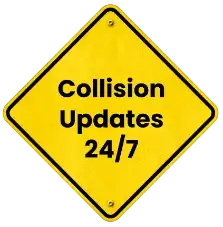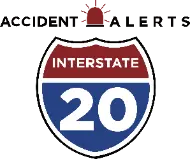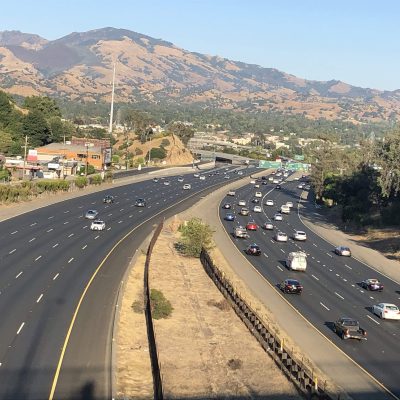
School Bus Accidents on I-20


Interstate 20 is a critical east–west route connecting Texas to South Carolina, passing through major metropolitan areas. Each day, hundreds of school buses travel segments of I-20 to transport children to classes, field trips, and sports events. While the interstate offers efficient travel, it also exposes young passengers to serious risks. Understanding how school bus crash I-20 incidents occur and how to prevent children’s accidents on the highway is essential for parents, school districts, and drivers sharing the road.
The Scale and Nature of the Risk
School buses are statistically among the safest vehicles on the road, but when they’re involved in interstate collisions, the consequences can be devastating. On high-speed routes like I-20, even minor driver errors or sudden lane changes can have amplified results. Heavy traffic from commercial trucks, commuter vehicles, and long-distance travelers compounds the danger.
Unlike city streets, interstates provide fewer opportunities to stop safely. A disabled bus or sudden braking maneuver on I-20 can trigger multi-vehicle chain reactions. The National Highway Traffic Safety Administration (NHTSA) reports that about 117 people are killed each year in school transportation-related crashes nationwide, and the majority of these deaths occur in other vehicles involved in the collision rather than on the bus itself.
Still, every crash involving children draws intense scrutiny—and rightfully so. On I-20, where average speeds often exceed 70 mph, the margin for error is razor-thin.
Common Causes of School Bus Accidents on I-20
While every collision is different, certain contributing factors frequently appear in reports along I-20’s busy corridors. Driver distraction and fatigue are common issues, as both bus operators and other motorists can lose focus during long stretches of highway driving. Aggressive driving near school buses is another recurring concern—passenger vehicle drivers often misjudge distance and speed when trying to pass or merge ahead of slower buses.
Weather conditions, including heavy rain, fog, and sun glare, also play a major role by reducing visibility and increasing stopping distances. Mechanical failures such as tire blowouts and brake malfunctions remain serious hazards for large vehicles traveling at high speeds. Additionally, improper lane changes by other drivers contribute to many collisions when cars or trucks cut too closely in front of a school bus.
Each of these situations can escalate quickly on interstates like I-20, where high traffic volumes and fast-moving vehicles amplify the consequences of even small mistakes.
High-Risk Corridors Along I-20
Certain stretches of I-20 are more prone to school bus accidents than others. Urban sections around Atlanta and Dallas experience dense, fast-moving commuter traffic that often conflicts with slower-moving buses merging or exiting. Meanwhile, rural stretches in Alabama and Mississippi lack wide shoulders and have limited emergency access points, complicating response times when crashes occur.
In addition, sections under construction introduce narrow lanes and abrupt detours that challenge large vehicle maneuverability. Even temporary lane shifts can create confusion for drivers following behind school buses.
Recognizing these geographic risk patterns helps authorities target enforcement and awareness campaigns where they are needed most.
Safety Measures for Buses and Drivers
Prevention remains the most effective safeguard against tragedy. State transportation agencies and school districts are investing in both technology and training to reduce school bus crashes on I-20. Key measures include:
- Enhanced driver training. Programs now emphasize defensive driving techniques specific to high-speed interstates.
- Improved vehicle technology. Many fleets have upgraded with lane-departure warnings, collision-avoidance systems, and onboard cameras to document road behavior and assist investigations.
- Routine maintenance checks. Strict mechanical inspections reduce the chance of mechanical failure during long trips.
- Visibility enhancements. Reflective decals, LED stop arms, and improved lighting help surrounding motorists recognize buses in low-light conditions.
For other drivers, awareness is equally important. Maintaining safe following distances, slowing near stopped or merging buses, and avoiding distractions are simple but lifesaving habits.
Protecting Children on the Highway
Children are particularly vulnerable during school bus incidents. On highways like I-20, where buses may stop only in designated pull-off zones, even a brief lapse in driver attention can have tragic results.
Parents and schools can reinforce safe behavior by reminding students to remain seated until the bus comes to a complete stop and to stay alert when crossing roads near drop-off points. Bus drivers should also perform regular mirror checks to confirm that all students have cleared the roadway before moving.
States along I-20 continue to strengthen laws requiring drivers to stop for school buses displaying flashing red lights. Yet compliance remains inconsistent. Education and enforcement must work hand in hand to reduce preventable injuries.
What to Do After a School Bus Crash on I-20
When a collision occurs, a quick and coordinated response is vital. Drivers should pull over safely, turn on hazard lights, and call 911 immediately. If children are on board, the bus operator’s priority is to ensure all passengers are accounted for and moved to a secure location away from traffic.
Documenting the scene is crucial. Note the time, weather, and traffic conditions, and take photographs if it can be done safely. Parents and guardians should seek prompt medical evaluation for any child involved, even if injuries appear minor—symptoms such as whiplash or concussion can emerge later.
Authorities will typically investigate the crash, reviewing driver logs, vehicle maintenance records, and roadway factors. Keeping copies of all reports and communication helps when pursuing insurance or legal claims.
Legal Support After a School Bus Crash on I-20
School bus accidents can involve multiple parties—bus operators, school districts, maintenance providers, and private motorists. Determining liability requires experience with both transportation law and interstate regulations. Victims and families may face significant medical costs, emotional trauma, and long-term rehabilitation needs.
An attorney familiar with school bus crash I-20 cases understands how to gather evidence, work with accident reconstruction experts, and identify all responsible parties. Legal guidance is essential in cases involving child accidents on the highway, where timing and documentation directly affect outcomes.
If you or your child has been affected by a school bus accident on I-20, professional representation can provide clarity and peace of mind during a difficult time. We can connect you with an I-20 bus accident attorney who has the experience to handle complex multi-party claims and ensure your family’s rights are protected.

